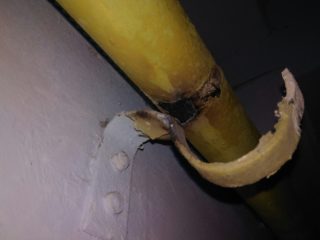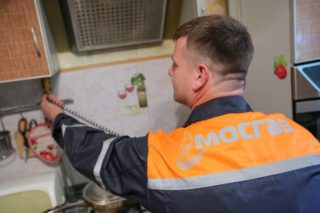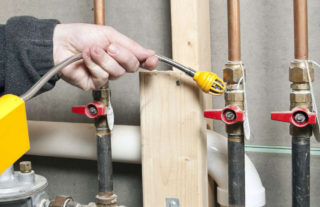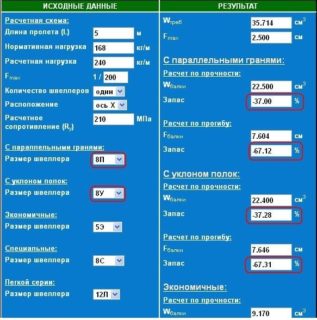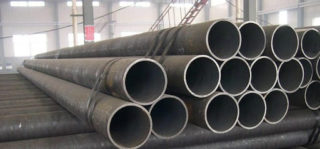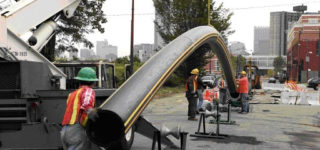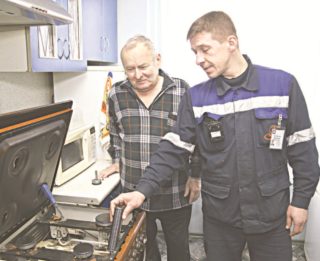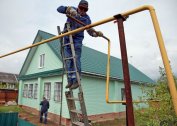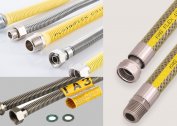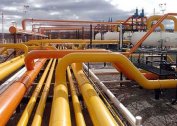The life of a gas pipeline is the period of service of pipelines, which is calculated from the moment of installation or repair to the development of the technological resource of material and equipment. The duration of use of the pipes is determined by the manufacturer, as indicated in the accompanying documentation. After the end of the service life of gas pipes in an apartment building, a commission inspection, technical inspection is carried out, after which an act is drawn up. The document indicates the possibility of extending the period of operation or the need to replace communications.
Commissioning of gas pipelines
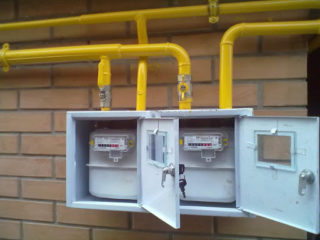
Gas supply of residential buildings is carried out through fan-type pipelines. On the way to supply gas to the settlement, several distribution substations are installed, the last of which is mounted inside or outside the building. Then gas is supplied to the apartments in risers, where branches go to the meters from them, and from them to consumers (stoves, columns, boilers). Wiring and connection diagrams are carried out in accordance with established norms and rules. Verification of compliance with the technology is carried out by special control services.
Putting gas pipelines into operation is permitted subject to the following parameters:
- pipe wall thickness - 3 mm for underground and 2 mm for external;
- diameter - 15-100 mm;
- design pressure - 3-12 atmospheres;
- ceiling height - from 220 cm;
- gasket separate, not in ducts or near a heating riser;
- not opposite windows and doors;
- free access for inspection and repair;
- the presence of effective natural ventilation;
- lack of combustible materials in the finish;
- joint only using couplings;
- the use of special devices for wall mounting.
Reception of intra-house communication consists of checking the status of such criteria:
- joint welding;
- staining (for iron);
- material of manufacture;
- system tightness.
The next deadline shall be indicated in the act, no later than by which the next check will be conducted.
Factors affecting the condition of the pipes
The service life of a gas pipeline depends on a number of objective and subjective factors that can extend or shorten it. Practice shows that most of the land and underground highways retain their performance even after the warranty period, sometimes exceeding it several times. However, precedents are not uncommon when the network was destroyed long before the end of the billing period.
The following factors influence the operation of communications:
- Design errors leading to subsequent deformations and tears.
- Violations of the laying technology, expressed in weak joints, ignoring the use of sleeves when passing through walls.
- The quality of the materials used during installation.
- The content of alkalis and acids in the soil, leading to metal corrosion.
- Air humidity.
- Compliance with the schedule of inspection of structures.
All these factors lead to the fact that pipes from one batch can serve a completely different time.
Maintenance
Regular maintenance of gas pipelines makes it possible to identify and eliminate an emergency situation and extend their service life.
Maintenance of gas pipelines includes the following activities:
- External inspection for detecting external damage, corrosion, peeling of the protective coating.
- Performance monitoring of shutoff and control valves.
- Checking the tightness of the system by crimping.
- Restore joint integrity.
- Removing rust, applying a new protective coating.
- Replacing emergency fragments.
- Checking equipment for leaks and possible leaks.
Only qualified gas service personnel must carry out these manipulations.
It is forbidden to independently intervene in the system, check it with an open flame, apply bandages to pipes.
Repair work
Planned repairs of the pipeline are carried out after the warranty period established by their manufacturers. However, a routine inspection is carried out every 5-10 years, depending on the operating conditions of the system. Special devices are used, various examinations are carried out. Based on the audit results, a protocol and a work plan are drawn up.
The following signs indicate the need for repairs:
- thinning of the walls;
- violation of welds;
- leak detection;
- the appearance of rust;
- outflow or burnout of the paint.
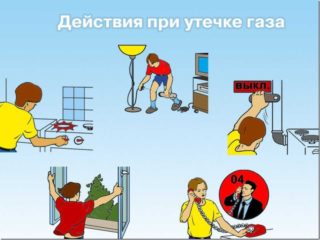 The repair procedure involves the complete or partial replacement of pipes. The rejected areas are cut out and new fragments are installed in their place.
The repair procedure involves the complete or partial replacement of pipes. The rejected areas are cut out and new fragments are installed in their place.
This process is carried out in the following sequence:
- Blocking the gas supply to the riser.
- The pipeline is pumped by air.
- Damaged areas are cut out.
- New pipes are welded.
- The system is checked for leaks.
- Steel parts are painted yellow, and in apartments to the taste of residents.
The final step is to draw up an act of completion.
Calculation of the degree of pipe wear
Specialists of gas services in planning inspections and repairs of piping systems are not limited only to external inspections and laboratory tests. Such events are productive, but to cover them all at home in a big city is simply unrealistic.
To work out a schedule for repairs, specialists use formulas developed on a scientific basis and the practice of observation.
To carry out the calculations, the following initial data are taken:
- rated voltage;
- strength factor;
- Wall thickness;
- minimum long-term strength of the material.
Indicators imply the technical properties of the material at an air temperature of 20 degrees.
Gas pipeline service life
If earlier only steel was used for the construction of pipelines, today polyethylene is gradually replacing it. Each material has its pros and cons, which should be discussed separately.
Iron pipes have the following advantages:
- high strength;
- tightness;
- the possibility of welding and threading;
- universality of laying (underground and on the surface).
Material disadvantages:
- heavy weight complicating installation;
- tendency to corrosion;
- lack of necessary flexibility;
- the formation of a large amount of smoke and debris during assembly, the risk of fire when using welding.
The life of a gas pipeline made of steel pipes is 40-50 years.
Advantages of plastic systems:
- simplicity and speed of assembly;
- increased throughput;
- resistance to corrosion and decay;
- no need for additional decoration.
Product disadvantages:
- pressure limitation up to 1.2 MPa;
- insufficient strength;
- connection only by welding;
- can not be laid in the ground;
- loss of shape and softening when heated above 80 degrees;
- destruction of the structure under the influence of ultraviolet radiation.
The estimated service life of a polyethylene gas pipeline is 50-80 years.
Extension of the service life
The service life is not a constant category, it is calculated on the basis of calculations, tests and generalization of data obtained from the statistics of past years. The operational period may be continued if the safety of facilities where communications are installed is ensured. Experts evaluate the conditions for the use of pipes, and then issue forecasts that are scientifically based conclusions and suggestions.
The gas pipeline can be operated after the expiration of the warranty period if, according to the diagnostic results, no serious defects in the system, as well as tendencies to their occurrence, have been detected.
The following rules exist for extending the operational life of a gas pipeline:
- regular inspection of communications;
- use of high-quality stop valves and control equipment;
- Do not use the pipeline as a support under furniture or for attaching clothesline.
If there is the slightest suspicion of damage to the gas pipeline, urgently need to call 104.
